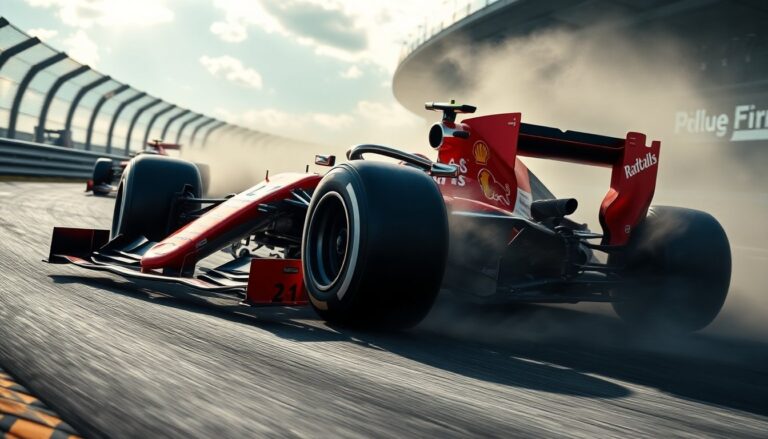Argomenti trattati
The world of motor sport is a dynamic realm characterized by speed, skill, and strategic depth. From the thunderous engines of Formula 1 cars to the precision drifting seen in rally racing, motor sport represents a distinctive fusion of athleticism and technological innovation. This article explores the intricacies of motor racing, highlighting its various disciplines, the technology that propels it, and the strategies that often dictate race outcomes.
The different forms of motor sport
Motor sport encompasses a wide array of disciplines, each distinguished by its own unique rules, challenges, and dedicated fanbases. Leading forms include Formula 1, rally racing, touring car racing, and motocross. Each discipline presents its own competitive flavor, attracting enthusiasts and participants alike.
Formula 1: The pinnacle of racing
Formula 1 stands as the premier category of motor racing, showcasing intense speed and precision on meticulously designed circuits. Teams pour millions of dollars into advanced technology and aerodynamics to gain a competitive edge. Governed by the FIA (Fédération Internationale de l’Automobile), the sport prioritizes both safety and fair competition. The annual championship features iconic events such as the Monaco Grand Prix and the Italian Grand Prix held at Monza, drawing fans from around the globe.
Rally racing: The test of endurance
Rally racing challenges competitors to venture off conventional routes, testing their skills across diverse terrains such as gravel, snow, and asphalt. Drivers complete a series of timed stages, often depending on co-drivers who offer critical insights about the course. This racing format highlights not only speed but also precision and strategic navigation, creating an exhilarating experience for spectators.
The role of technology in motor sport
Technology is essential to the advancement of motor sport. Innovations in aerodynamics, engine efficiency, and tire design continuously expand the limits of speed and performance. Teams allocate substantial resources to research and development, often partnering with prominent automotive manufacturers and technology firms to secure a competitive advantage.
Aerodynamics: The art of airflow
Aerodynamics plays a vital role in racing performance. The body design of a car significantly influences its speed and handling capabilities. Engineers conduct detailed analyses of airflow patterns to develop streamlined shapes that reduce drag while enhancing downforce. This optimization is crucial in high-speed racing, where even slight modifications can determine the outcome between winning and losing.
Data analytics: The new frontier
Data analytics has recently transformed the landscape of motor sport. Teams gather extensive data during races, examining variables such as tire temperature and engine performance in real-time. This abundance of information empowers teams to make rapid decisions and adjustments, fine-tuning their strategies on the go. The incorporation of big data and machine learning is reshaping the approach to racing, making it more strategic than ever before.
The strategy behind winning races
Speed is a critical factor in motor racing, but the strategy behind it is equally important. Teams must continually adapt to various factors, such as weather changes, track conditions, and tire degradation. Knowing when to execute pit stops, which tires to choose, and how to effectively manage fuel consumption can significantly influence the outcome of a race.
Pit stops: A critical component
Pit stops represent a vital aspect of race strategy. Teams strive to reduce the duration of pit time while ensuring all necessary adjustments and refueling are performed efficiently. A well-timed and executed pit stop can offer a considerable advantage, enabling drivers to re-enter the track ahead of their rivals.
Driver skill: The human element
At the heart of motor sport lies the driver. The combination of skill, experience, and mental fortitude distinguishes the exceptional from the average. Drivers must maintain focus and composure under pressure, making split-second decisions that can alter the outcome of a race. The relationship between driver and machine creates a dynamic that enhances the sport’s complexity.
The realm of motor sport presents a captivating mix of speed, technology, and strategy. From the engineering feats of Formula 1 to the challenging landscapes of rally racing, each discipline offers distinct challenges and excitement. As technology progresses and teams enhance their strategies, the future of motor sport is poised for even greater thrills.

